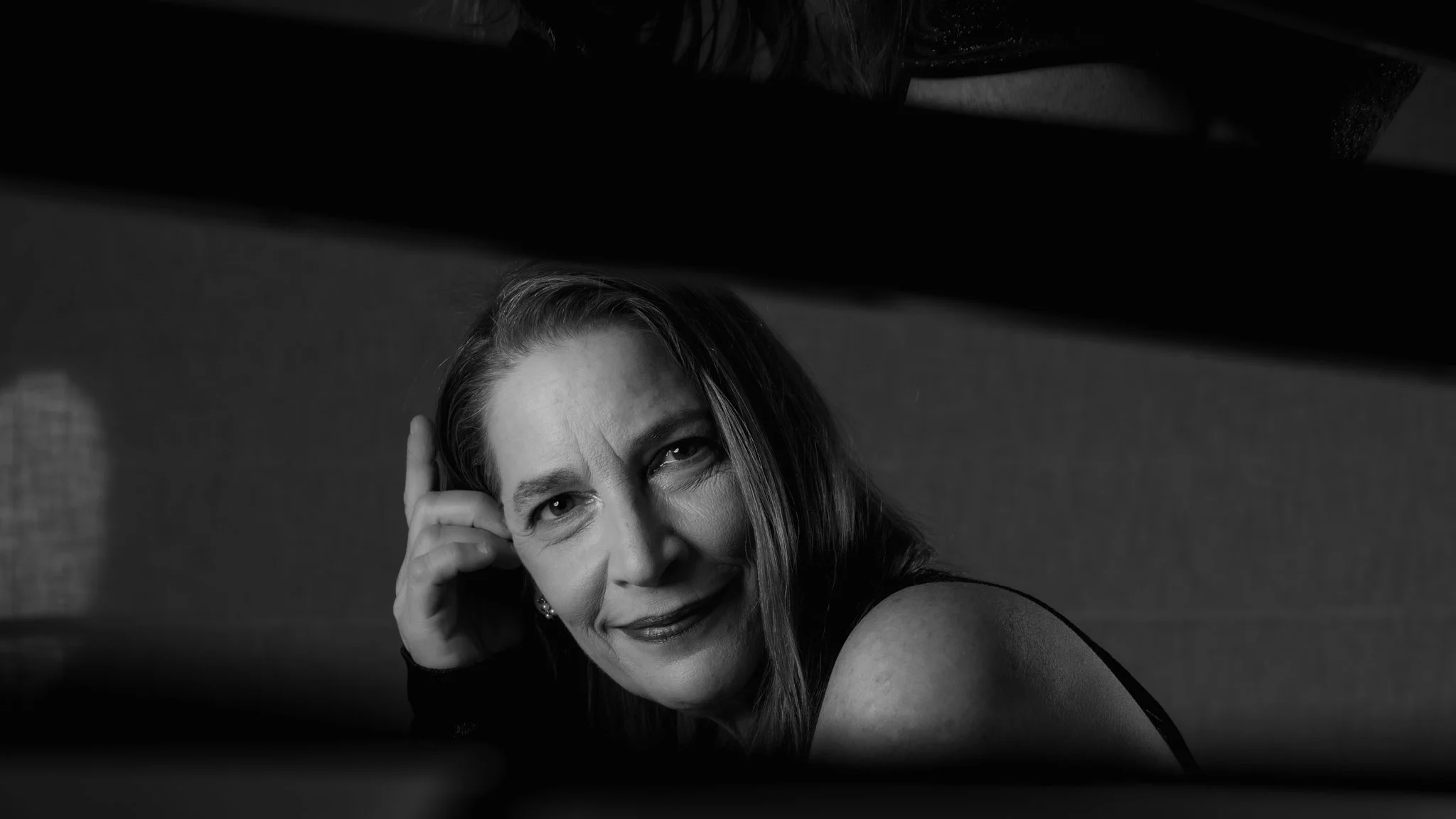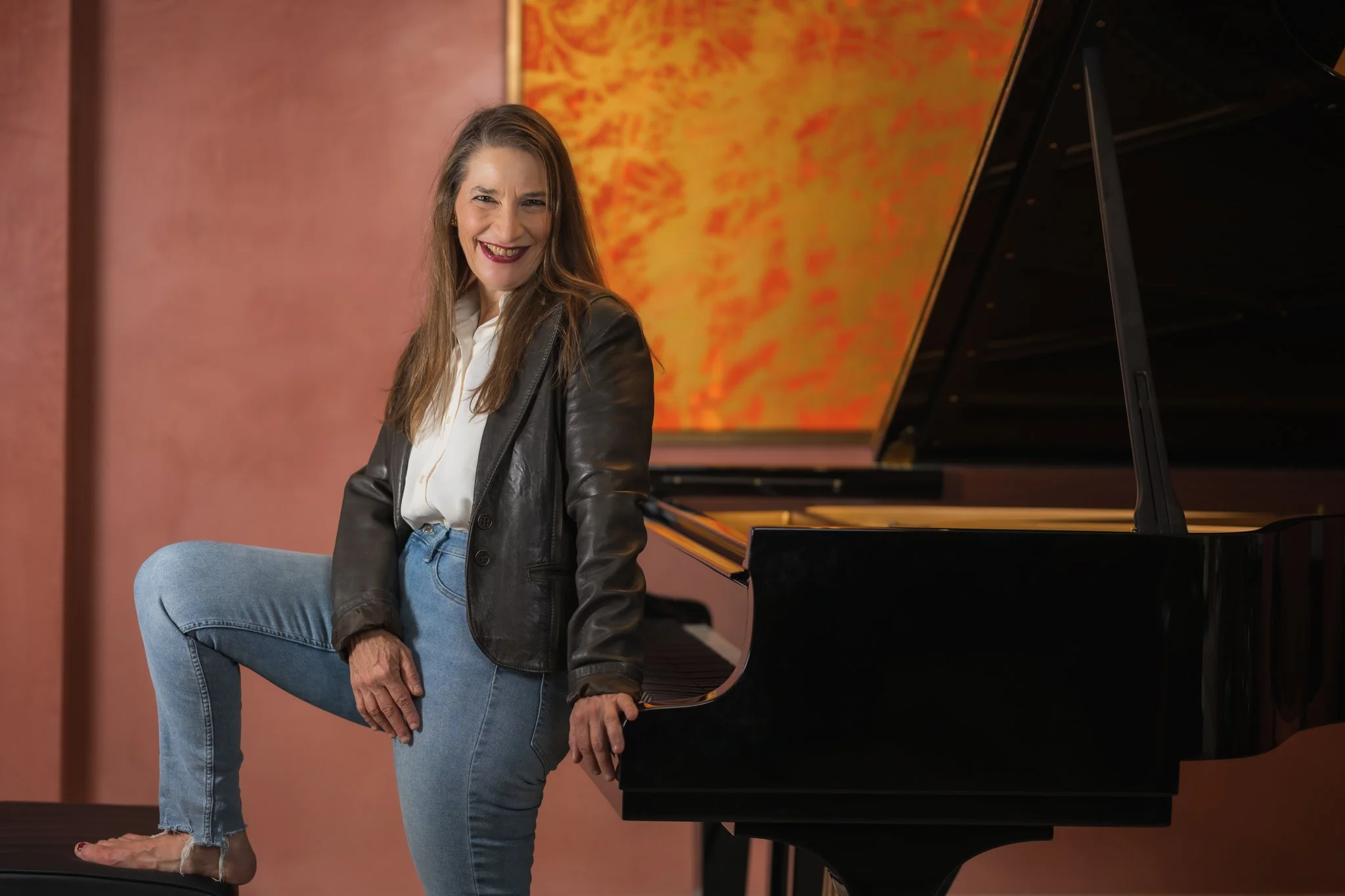How to make a successful professional photo shoot for an artist's portrait?
An artist's portrait is more than just a photo. It reflects a personality, a world and a story. For this reason, a successful photo shoot for an artist requires care, preparation and technical mastery.
A specialized photographer must combine artistic vision with professional rigor. Every detail counts: location, lighting, equipment, framing and retouching.
Let's take a look at the eight key steps to creating a memorable artist portrait, and consider the example of international pianist Nadia Weintraub.
1. Preparing and planning the artist portrait
First of all, a successful artist's portrait requires meticulous preparation. The photographer and artist talk before the session. The aim is to define the concept and visual identity.
There are several questions to ask:
What universe do you want to convey?
Should the decor be minimalist or richly symbolic?
Does the artist prefer sobriety or more creative staging?
Another essential point is human contact. It's essential to have a very good relationship with the artist being photographed. Understanding the artist's background, expectations and portrait needs helps create a faithful image. This preliminary exchange builds trust and guarantees a more natural photo session.
In short, this phase aligns the artist's artistic vision with the photographer's technical expertise.
2. Choosing the right equipment for the photo shoot
A professional photographer knows that equipment has a direct influence on the result. For an artist's portrait, the quality of the camera body and lenses is paramount.
A digital SLR or full-format hybrid remains ideal. Fixed focal lengths (50 mm or 85 mm) offer silky bokeh and highlight the face. Conversely, a wide-angle lens can be used to integrate the studio, the scene or a landscape.
And let's not forget the accessories:
a tripod for stabilization,
one or more reflectors to soften the light,
several flashes,
and sometimes a neutral background for an uncluttered look.
Thanks to this equipment, the photographer can adapt the photo shoot to the world of each artist.
3. Select photo shoot location
The location contributes greatly to the emotion conveyed. A photo studio offers total control over light and setting. Conversely, a photo shoot on location or in the artist's studio brings authenticity and naturalness.
Let's take an example:
For a painter, a studio full of canvases already tells a story.
For a musician, the stage or the instrument become central elements.
For a writer, a library creates an inspiring atmosphere.
Thus, the location should never be chosen at random. It must support the message of the photographic portrait.
For my part, I have a clear preference for moving to the place where the artist works. He'll be in his element and more confident.
4. Mastering light in an artist's portrait
Light is the key to a successful portrait. It sculpts features, creates shadows and suggests mood.
Soft, diffused natural light creates an authentic look.
Studio flashes can be used to shape lighting and play with contrasts.
A wide-aperture diaphragm (f/1.8 or f/2.8) helps to detach the subject from the background.
That's why an artist photographer needs to know how to juggle natural and artificial sources. The aim is always the same: to bring out the creative personality of the subject.
5. Portrait framing and composition
An artist's portrait is more than just a centered face. Composition contributes to emotion.
The photographer can use the rule of thirds to balance the image. Focus should always be on the eyes, mirrors of the soul.
Various framing options are available:
a close-up of the face for an intimate effect,
the American plan integrating the instrument or work tool,
the wide shot to contextualize the artist in his world.
By varying the angles, the photographer captures not only an appearance, but also an essence.
6. Create a natural interaction with the artist
A portrait photo shoot isn't just about technique. Atmosphere plays a decisive role. The photographer needs to create a relaxed atmosphere.
An authentic artist's portrait is born of a relationship of trust. The photographer encourages, guides and suggests different poses. Some will be posed, others more spontaneous.
In the end, it's often in these moments of sincerity that we capture the artist's true personality.
7. The role of post-processing and retouching
Once the session is over, the work continues. The post-processing enhances the image while respecting its authenticity.
Professional camera sensors reveal every detail. This is good for sharpness, but sometimes bad for the skin. Small imperfections become too visible.
That's why I use a softer retouch for women, to preserve the delicacy of the rendering. For male portraits, I sometimes retain a little more texture.
Most of my retouching is done in Lightroom. Adjustments concern white balance, brightness, contrast and sharpness. The aim is to improve the portrait without distorting the person.
In short, successful retouching enhances the image, but always respects the authenticity of the artist photographed.
8. Present and promote artists' portraits
Finally, presentation is just as important as the shot. An artist's portrait can take many forms:
high-end paper prints,
photo books or portfolios,
online presentations on a website or social networks,
gallery and festival exhibitions.
but above all, rapid transmission of retouched photos to the customer (max 24h).
A fine portrait deserves a fine finish. Fine art printing, for example, guarantees exceptional durability and color intensity.
Case in point: the portrait of Nadia Weintraub
To illustrate these steps, let's take the example of international pianist Nadia Weintraub. We recently had the honor of producing her portrait.
Preparation began with a discussion of her expectations. She wanted a rendering that was both sober and luminous, in keeping with her music.
We opted for a soft, enveloping light, reflecting the delicacy of her playing. The choice of framing highlighted her eyes and hands, symbols of her art.
Thanks to this photo shoot, Nadia Weintraub now has an artist portrait that fully reflects her musical and personal identity.
Portrait of artist Nadia Weintraub
Artist portraiture and corporate photography
At ISOWAY, we connect the corporate and artistic worlds. Both worlds share similar needs:
build a visual identity,
inspire confidence,
and communicate effectively.
An artist's photo portrait is part of a global strategy. It can be used in a press release, on a poster, in a portfolio or even in a corporate campaign.
This is why corporate photography applied to artists becomes a powerful tool. It gives a professional image while respecting authenticity.
Conclusion
In conclusion, the success of an artist's portrait depends on a balance between technique, human relationships and sensitivity. Every step, from preparation to the final print, contributes to creating a strong, lasting image.
A professional photo shoot reveals the essence of an artist and shares his or her world with the public. Nadia Weintraub illustrates this approach: her portrait reflects her music and her authenticity.
For all these reasons, investing in a photographer who specializes in artist portraits is essential. At ISOWAY, we believe that every creator deserves a portrait that sublimates their talent and tells their story.

















